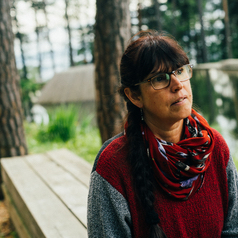California
See the following -
Oroville Hospital Named One of the Winners of the VA Medical Appointment Scheduling Contest
Oroville Hospital was named one of the three winners of the innovation challenge issued by the U.S. Department of Veterans Affairs (VA) to help the agency develop a new medical appointment scheduling application for its award-winning Electronic Health Record (EHR), VistA. Oroville was declared a winner based on the open source, web-based scheduling program it is currently developing and testing at its medical facilities in Oroville, California. Read More »
- Login to post comments
Oroville Hospital’s Scheduler: a winning technology
 On October 3rd, the winners of the US Dept of Veteran’s Affairs’ (VA) Medical Appointment Scheduling Contest were announced. In second place was the OH Scheduler, which was the submission from Oroville Hospital in California. I’d like to expand on their press release and provide some background to the technology that was used to develop their scheduler: it’s very much a case study of everything I’ve been talking about in my blog The EWD Files. As it happens, the OH Scheduler was first and foremost designed and developed for use at Oroville Hospital. However, since their Electronic Healthcare Record (EHR) is based on the VA’s VistA system, Oroville Hospital believed that it should also meet many of the key requirements of the VA and therefore submitted it as a contender for the VA’s competition. Read More »
On October 3rd, the winners of the US Dept of Veteran’s Affairs’ (VA) Medical Appointment Scheduling Contest were announced. In second place was the OH Scheduler, which was the submission from Oroville Hospital in California. I’d like to expand on their press release and provide some background to the technology that was used to develop their scheduler: it’s very much a case study of everything I’ve been talking about in my blog The EWD Files. As it happens, the OH Scheduler was first and foremost designed and developed for use at Oroville Hospital. However, since their Electronic Healthcare Record (EHR) is based on the VA’s VistA system, Oroville Hospital believed that it should also meet many of the key requirements of the VA and therefore submitted it as a contender for the VA’s competition. Read More »
- Login to post comments
Promoting Earthquake Readiness
In Oregon, Washington State and California, an early warning system helps citizens and officials better prepare for and respond to earthquakes. In the early morning hours on August 24, 2014, scientists at UC Berkeley received a “ShakeAlert” – an alarm providing warning of a pending earthquake. Five seconds later, the city of Napa felt a magnitude 6.0 earthquake. That five-second warning was an early success for a broader goal: the creation of an earthquake early warning system that can communicate the size, extent and timing of imminent earthquakes on the West Coast...
- Login to post comments
Rate Shock And Awe In California
I have to say I was surprised with the press reports last week that there wasn’t “rate shock” in California when the California exchange offered preliminary information about their new plans and rates. Read More »
- Login to post comments
Report: Grim Future For U.S. Docs; Outlook Brighter In California
A national report released last week paints a grim picture of the future of practicing medicine in the U.S., but the sentiment is not universally echoed in California. Read More »
- Login to post comments
The Growing Field of Ecotherapy
The first time J. Phoenix Smith told me that soil has healing properties that can help thwart depression, I just nodded slowly. Smith is an ecotherapist, a practitioner of nature-based exercises intended to address both mental and physical health. Which means she recommends certain therapies that trigger in me, as a medical doctor, more skepticism than serenity: Listen to birdsong, in your headphones if necessary. Start a garden, and think of the seeds’ growth as a metaphor for life transitions. Find a spot in a park and sit there for 20 minutes every week, without checking your phone, noting week-to-week and seasonal changes in a journal...
- Login to post comments
The Really Big One
 An earthquake will destroy a sizable portion of the coastal Northwest. The question is when. Most people in the United States know just one fault line by name: the San Andreas, which runs nearly the length of California and is perpetually rumored to be on the verge of unleashing “the big one.” That rumor is misleading, no matter what the San Andreas ever does...Just north of the San Andreas, however, lies another fault line. Known as the Cascadia subduction zone, it runs for seven hundred miles off the coast of the Pacific Northwest, beginning near Cape Mendocino, California, continuing along Oregon and Washington, and terminating around Vancouver Island, Canada. The “Cascadia” part of its name comes from the Cascade Range, a chain of volcanic mountains that follow the same course a hundred or so miles inland...
An earthquake will destroy a sizable portion of the coastal Northwest. The question is when. Most people in the United States know just one fault line by name: the San Andreas, which runs nearly the length of California and is perpetually rumored to be on the verge of unleashing “the big one.” That rumor is misleading, no matter what the San Andreas ever does...Just north of the San Andreas, however, lies another fault line. Known as the Cascadia subduction zone, it runs for seven hundred miles off the coast of the Pacific Northwest, beginning near Cape Mendocino, California, continuing along Oregon and Washington, and terminating around Vancouver Island, Canada. The “Cascadia” part of its name comes from the Cascade Range, a chain of volcanic mountains that follow the same course a hundred or so miles inland...
- Login to post comments
The Troubling Data Behind America's Growing Wildfires
It's hard to process yesterday's deaths of 19 firefighters in Arizona. The tragedy is so stark an outlier that most states haven't seen that many deaths of firefighters due to wildfire in their combined histories. But there is one worrisome trend: fires are getting bigger and often deadlier. Read More »
- Login to post comments
Three US Hospitals Hit by Ransomware
The IT systems of three US hospitals have been infected with ransomware, which encrypts vital files and demands money to unlock them. The systems, at Kentucky Methodist Hospital, Chino Valley Medical Center and Desert Valley Hospital, California, are now running normally again. None of the hospitals is believed to have paid the ransom. And the cases are now being investigated by the FBI...
- Login to post comments
U.S. Trying to Find More Doctors to Send to Disaster Areas
A U.S. government program that sends doctors and nurses to disaster zones says it needs more health-care workers, as relief efforts during this hurricane season are near the end of a second month with no end in sight in Puerto Rico and the U.S. Virgin Islands. The National Disaster Medical System, which recently wrapped up big deployments to hurricane-ravaged areas in Texas and Florida, says it will start recruiting more medical professionals in the next few weeks...
- Login to post comments
US Hospitals Facing Financial Squeeze-Mass Closures
In the last year, the profitability of U.S. hospitals eroded for the first time since the Great Recession, pushing some closer to and others over the solvency precipice. Revenues are down and costs are up. And these issues appear systemic and entrenched, giving rise to a series of important and relevant questions: How can hospitals adapt? If they do, will they still survive? And, do we as a nation think it’s important to make hospitals accessible, even if they lose money? Read More »
VA Purchases an Additional 20 ReWalk Exoskeleton Systems for First Ever Multi-Center Exoskeleton Clinical Trials
 ReWalk Robotics Ltd...announced that the U.S. Department of Veterans Affairs ("VA") has purchased an additional 20 ReWalk Personal Systems to support initiation of their national multi-center clinical trial. The VA clinical trial is the first-ever U.S. study to examine the impact of exoskeleton use in the home or daily life setting. The study will include 160 participants across the country, with six VA medical centers participating in the first phase across California, Florida, Massachusetts, Texas and Virginia...
ReWalk Robotics Ltd...announced that the U.S. Department of Veterans Affairs ("VA") has purchased an additional 20 ReWalk Personal Systems to support initiation of their national multi-center clinical trial. The VA clinical trial is the first-ever U.S. study to examine the impact of exoskeleton use in the home or daily life setting. The study will include 160 participants across the country, with six VA medical centers participating in the first phase across California, Florida, Massachusetts, Texas and Virginia...
- Login to post comments
VistA and Related 'Open Source' EHR Systems in use Across California
The installation and use of 'open source' electronic health record (EHR) systems have continued to spread across California and many other states across the U.S. See the map of healthcare facilities running some variant of the open source VistA electronic health record (EHR) system in California. We keep learning of more sites from members at the WorldVistA meeting taking place this week at George Mason University. Read More »
- Login to post comments
Western States Consortium (WSC) Pilot of Direct Connect between California & Oregon
Health care providers in California and Oregon are now querying each others’ provider directories and sending interstate Direct messages as a result of the Western States Consortium project. Read More »
- Login to post comments
What Western States Can Learn From Native American Wildfire Management Strategies
 News media coverage of wildfires commonly frames them as "natural disasters" - dangerous elements of the natural world over which humans have little control. The language of climate change, fear of fire and the sense that it has become inevitable can be overwhelming, leaving people with the view that little can be done to manage these events. But in fact, people aren't helpless. While fires can be dangerous, they are inevitable and necessary in many ecosystems, and humans have long adapted to them. Across North America, indigenous peoples have actively managed forest ecosystems through the use of fire. Euro-American settlers were struck by the rich biodiversity of California's forests, woodlands and prairies, but they didn't understand that indigenous people's use of fire was responsible for them.
News media coverage of wildfires commonly frames them as "natural disasters" - dangerous elements of the natural world over which humans have little control. The language of climate change, fear of fire and the sense that it has become inevitable can be overwhelming, leaving people with the view that little can be done to manage these events. But in fact, people aren't helpless. While fires can be dangerous, they are inevitable and necessary in many ecosystems, and humans have long adapted to them. Across North America, indigenous peoples have actively managed forest ecosystems through the use of fire. Euro-American settlers were struck by the rich biodiversity of California's forests, woodlands and prairies, but they didn't understand that indigenous people's use of fire was responsible for them.
- Login to post comments